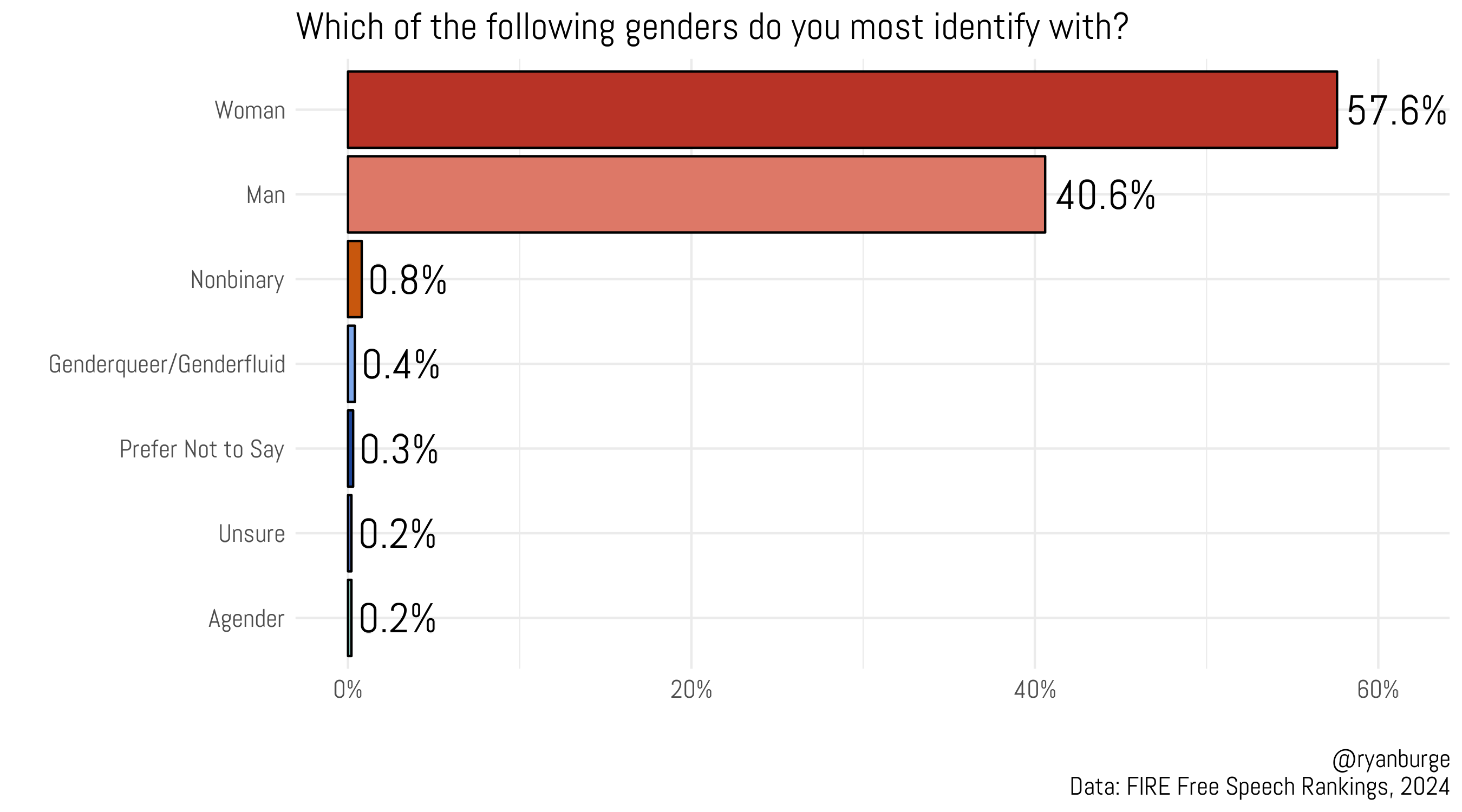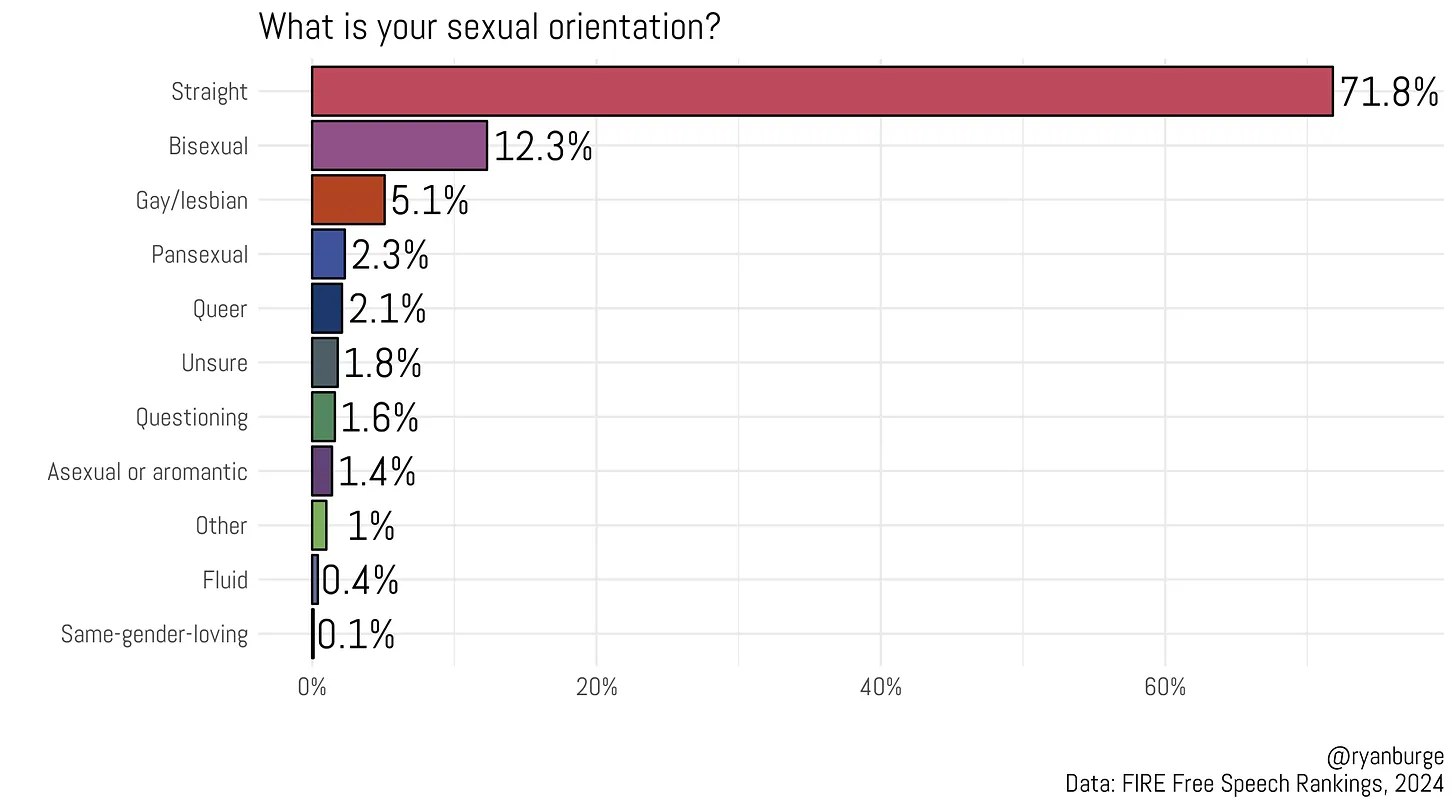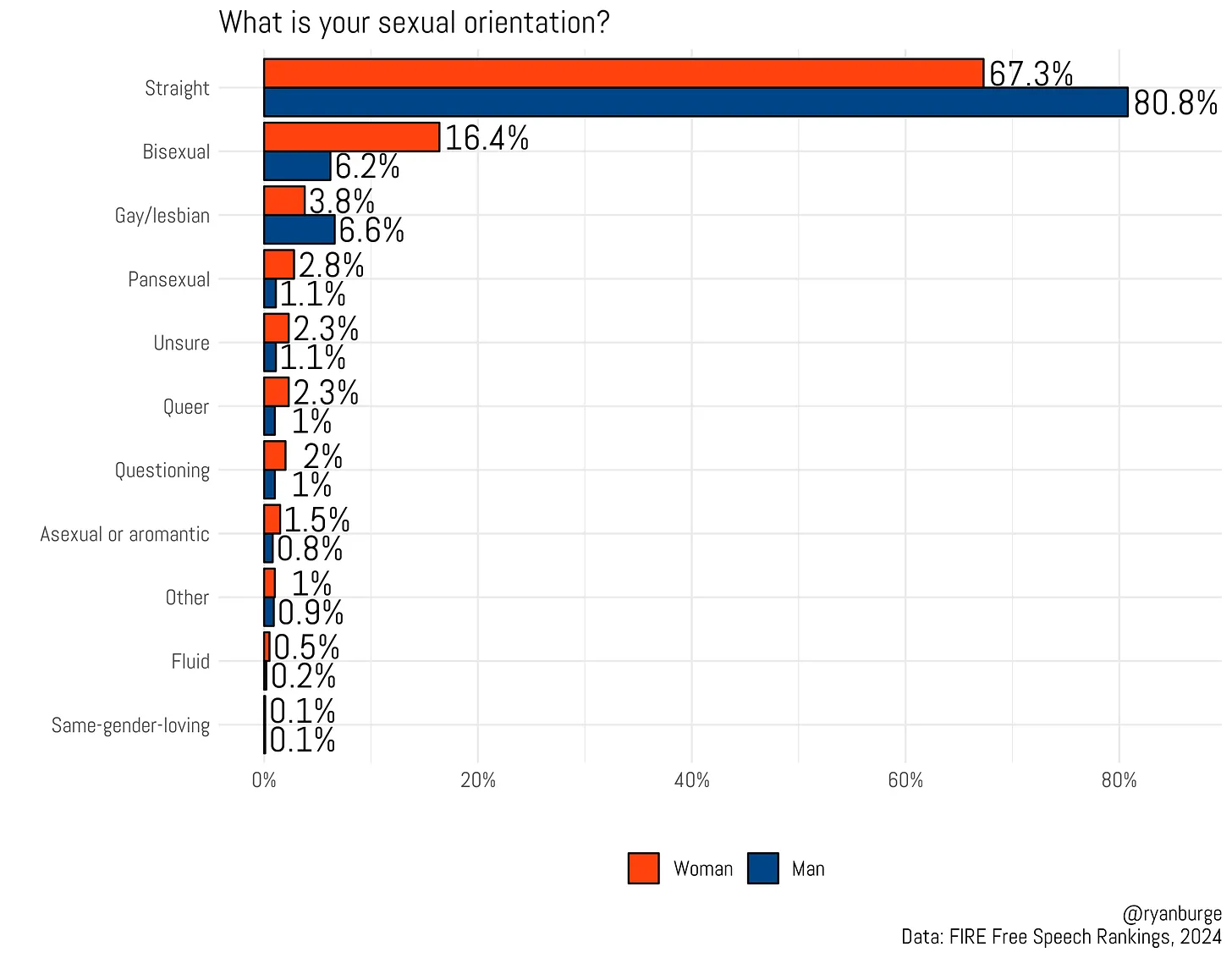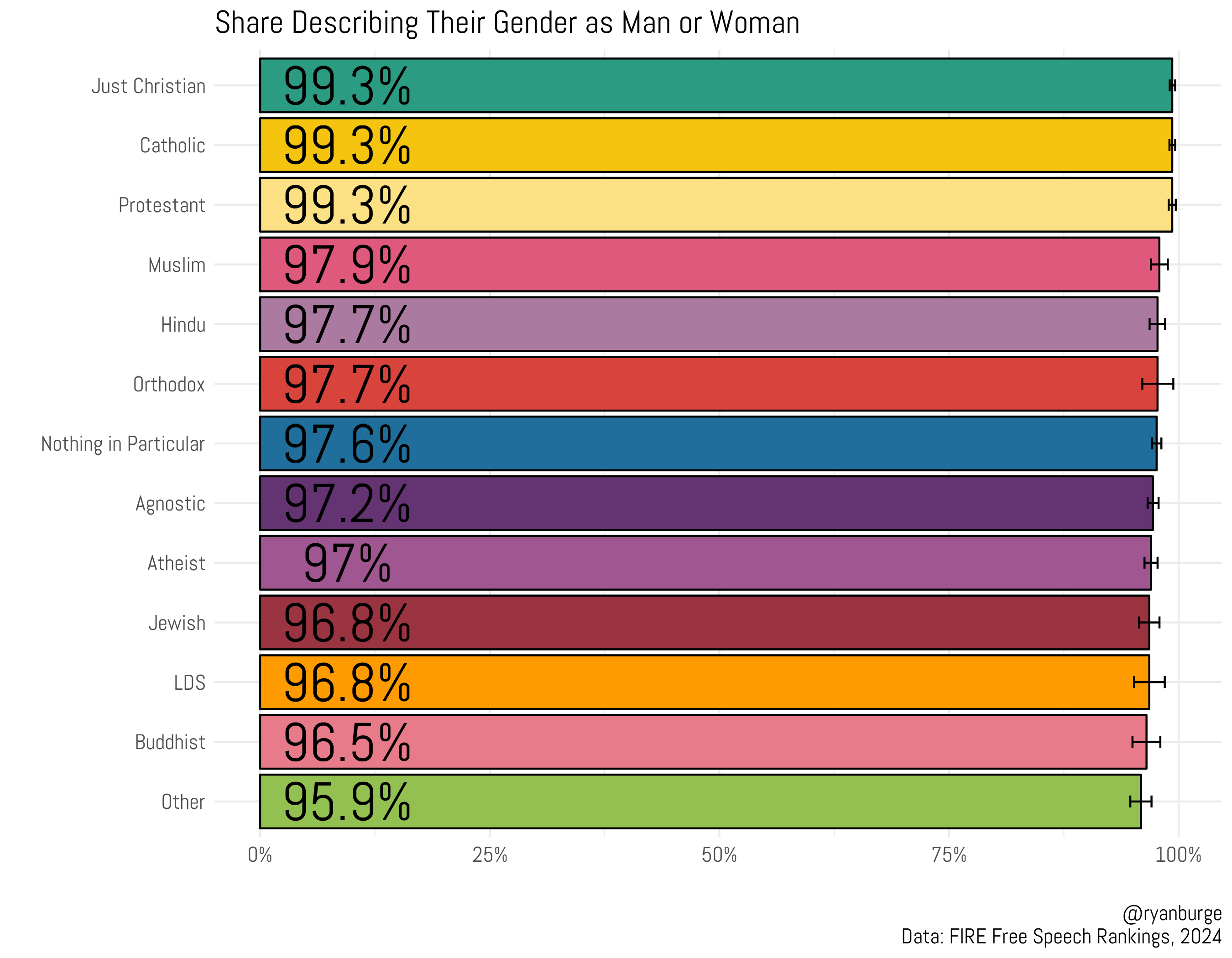If you watched TV or paid attention to your screens or listened to the main news outlets, you would probably get the idea that half of all youth (18-25 years old) see themselves as something other than male or female.
Look at this survey which suggests that genders to which youth identify is not quite as diverse as some might presume. In fact, the numbers of those not identifying as man or woman is almost statistically insignificant. Of course, this survey does not unpack if those who identify as man or woman are the so-called cisgendered or trans. Nevertheless, it ought to be relatively surprising to us that the overwhelming majority are not somewhere in between or outside the binary genders (male and female).The sexual orientation graph from this same survey shows more diversity. Indeed, though 72% are straight, some 28% do not believe they fit into that category. Not surprisingly, the vast majority are either bisexual or gay/lesbian. Here the numbers of gay/lesbian has ticked a bit higher than in the ancient past but the only real significant change here is with those who say they are bisexual. While this is significant, what is not explained is whether those so claiming to be bisexual are merely experimenting (since those surveyed are 18-25) or whether this is a permanent orientation.
Add onto this the religious affiliation of those surveyed and it is even more clear that the TQ+ side of the LGBTQ+ nomenclature is profoundly smaller among all those who claimed religious affiliation (no matter what that affiliation) and those who said they were other, athiest, and agnostic constitutions the largest for bisexual and something else. To put it another way, the groups least likely to say that they are straight are atheists at 55% and agnostics at 53%. Did you see it coming that nearly half of young atheists/agnostics are not heterosexual? Note that those who say they have no religious affiliation are much less likely to be straight compared to their religious counterparts. Is there something going on here?
To connect this to gender identity shows that there is not a lot changed or shocking here whatsoever. It is pretty ordinary. Less than one in one hundred Christians say that they are not a man or a woman. Look down at those considered more on the left or progressive side of America and even among atheists and agnostics, the vast majority identify as man/woman (97%). You should see here that although there may be some trans folks hidden in these statistics, though not that many, it is significant how few college aged folks say that they somewhere between a man and a woman (non-binary).






No comments:
Post a Comment